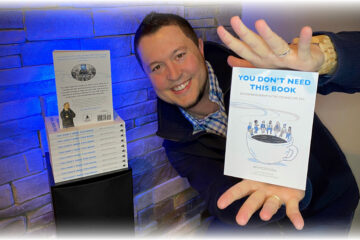Social architects around the globe have worked to establish frameworks that can be applied to support long-term, generous, and community-driven collaboration. They have done this alongside government, educational institutions, entrepreneurial support organizations, and economic development groups. Along with societal constructs to guide economic development rooted in entrepreneurship, innovative community builders have stabilized our ability to communicate by adopting a common language that makes universal collaboration possible.
To communicate how a community collaborates to support entrepreneurship, the term “entrepreneurial ecosystem” was coined to describe the people, organizations, resources, conditions, and, most important, the complex interactions between everything in a business environment. The scale of an entrepreneurial ecosystem can be local, statewide, regional, national, or worldwide, but the primary focus must remain: the success of entrepreneurs.
Like an ecological system found in nature, each part of an entrepreneurial ecosystem plays into the continuum of economic development. As a conglomeration of interdependent parts, changing one aspect can affect other features. With so many moving parts, complexity science helps us understand and communicate how entrepreneurial ecosystems work.
In their 2020 best-selling book The Startup Community Way: Evolving an Entrepreneurial Ecosystem, Brad Feld and Ian Hathaway use complex adaptive systems to explore how a systematic, holistic, inclusive, positive-sum, and long-term mindset unlocks entrepreneurial ecosystems to thrive as one. There are many other thought leaders (e.g. Johannes Pennings, Daniel Isenberg, Victor Hwang, Greg Horowitt, Lolita Taub, Dell Gines, Steve Case, Naval Ravikant, Wendy Guillies, Philip Gaskin, Andy Stoll, Cecilia Wessinger, Arlan Hamilton, Yancey Strickler, Marc Nager, Scott Resnick, Laís de Oliveira, Seth Godin, etc.) and exceptional organizations (e.g. Kauffman Foundation, Techstars, Revolution, Center for American Entrepreneurship, Forward Cities, Right To Start, Global Entrepreneurship Network, etc.) that continue to guide this collaborative approach to economic development. In short, when you win, we win. The sooner a community comes together to support what works while leaving outdated ideas behind, the sooner it can flourish.
Extra Shot
Have you seen Brad Feld’s remarkable contribution inside You Don’t Need This Book? Brad inspires us all to think big and it was an honor having him riff on such an important topic within my new book!
As you’ll read more about in YDNTB, a genuine commitment to inclusivity is where the magic happens within an entrepreneurial ecosystem. Complex systems rely and thrive on diversity. Identity diversity (e.g., gender, race, and sexual orientation) paired with cognitive diversity (e.g., experience, background, and perspective) invites everyone to participate. Along with radical inclusivity, equitable policies provide an environment where entrepreneurial traction is easier to find. As expanding connectivity diversifies, the ecosystem matures and long-term growth becomes more sustainable. When members of the community are successful, they are free to give back and this cycle continues to fuel positive change.
With enough people who care, healthy ecosystems can exist anywhere. No matter the environment, thriving ecosystems trust that a rising tide will raise all ships, allowing entrepreneurs and the people who support them to prosper. Such an inclusive and collaborative approach sets a tone for the broader business environment, strengthening economic development and our society overall.
Extra Shot
Wanna geek out on this together? Perhaps your ecosystem is thirsty for a fresh perspective? Let’s pour some virtual coffee and explore innovative ways to collaborate!
